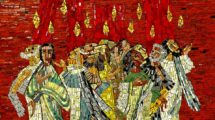
The Myth and Mystery of the Death Touch: Fact or Fiction?
Throughout the annals of martial arts history, few concepts have been as shrouded in intrigue and mystique as the "Death Touch," also known as "Dim Mak." Rooted in the ancient traditions of Chinese martial arts, the Death Touch has captivated the imaginations of enthusiasts and skeptics alike, often debated in the realms of folklore, martial arts, and popular culture. But what is the truth behind the Death Touch? Is it a remarkable, albeit obscure, technique capable of inflicting lethal damage with a single strike, or is it merely a legendary concept perpetuated by sensationalism?
Origins in Martial Arts
The term "Dim Mak," which translates to "the touch of death," has origins that date back several centuries in traditional Chinese martial arts. It is said to pertain to a variety of lethal striking techniques that target specific pressure points or vital areas of the body. Practitioners believe that a correctly executed strike can disrupt the flow of energy (qi) in the body, leading to symptoms ranging from incapacitation to actual death.
Legends surrounding this technique often feature skilled warriors or masters capable of bringing down opponents with just a touch. Stories abound of ancient masters who could incapacitate their foes without a single blow, causing them to collapse as if struck by a powerful force unseen. One of the most famous accounts relates to the renowned martial artist and actor Bruce Lee, who was said to have practiced Dim Mak, further embedding the technique into modern cultural consciousness.
The Science Behind the Death Touch
Skepticism surrounding the effectiveness of the Death Touch is prevalent, particularly in the scientific community. Modern medicine and biology do not support the notion that a simple touch can cause death or serious injury, except in extreme cases involving underlying health issues or pre-existing conditions. While martial arts do involve the understanding of human anatomy, physiology, and pressure points, the idea that striking a pressure point could induce an immediate lethal effect is seen as exaggerated.
Such touch-based techniques may temporarily incapacitate an opponent or create pain responses through nerve clusters, but they do not offer a guaranteed path to fatality. Furthermore, any martial artist (or practitioner of self-defense) will emphasize that even the most advanced techniques require training, precision, and situational awareness. The notion of a simplistic "kill move" lacks a comprehensive understanding of both martial arts and human biology.
Cultural Impact and Misconceptions
The idea of the Death Touch has transcended martial arts and found a place in popular culture, appearing in films, television shows, and literature. Often sensationalized, these portrayals contribute to the mystique of the technique, leading many to perceive it as a viable combat method. Martial arts films, in particular, have perpetuated the myth, showcasing superhuman abilities that often divert from realistic combat scenarios.
Such portrayals have led to a multitude of misconceptions. Instructors and students sometimes tout the effectiveness of so-called "Death Touch" techniques without any scientific validation, further obscuring the line between feasible martial skills and mythological embellishments. These misconceptions can create unrealistic expectations for aspiring martial artists and may encourage dangerous practices without a thorough understanding of their implications.
The Layer of Reality
In practice, some traditional martial arts do involve striking techniques that may target vulnerable points of the body, such as the throat, solar plexus, or head. However, the desired effects are largely context-dependent—varying from pain compliance to temporary incapacitation rather than guaranteed lethality. True mastery of martial arts involves a deep understanding of timing, distance, and the mental acuity to respond fluidly to any situation.
Moreover, the concept of the Death Touch also highlights the ethical considerations of martial arts training. Practitioners are taught not only to hone their skills for self-defense but also to cultivate discipline, respect, and a well-rounded character. The pursuit of lethal techniques can lead to a devaluation of these core principles, promoting a mindset that is contrary to the philosophies of many martial arts traditions.
Conclusion
The Death Touch, with its rich lore and appeal, remains a powerful symbol in the martial arts community and popular culture. Yet, beneath the myth lies a wealth of exaggerated tales and sensationalist interpretations that often overshadow the genuine practice of martial arts. While the idea of incapacitating or even killing an opponent with a single touch has its roots in a fascinating tradition, the reality is that martial arts is primarily about skill, respect, and self-discipline.
Ultimately, the Death Touch is a narrative more than a practical technique—an embodiment of the mysteries and myths that permeate the rich tapestry of martial arts. In a world that often seeks to uncover the secrets behind legendary skills, understanding the balance between myth and realism is essential for both practitioners and enthusiasts alike.
































Add Comment